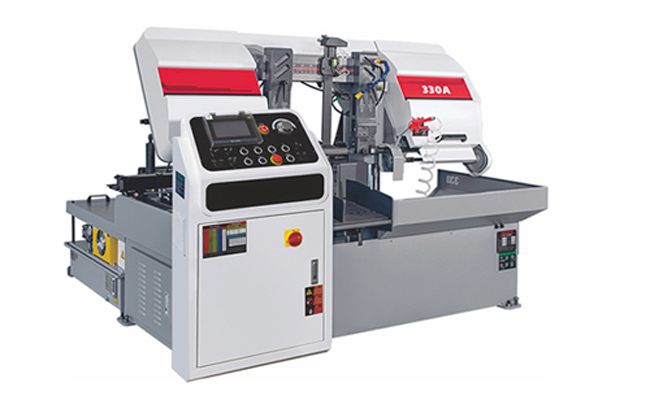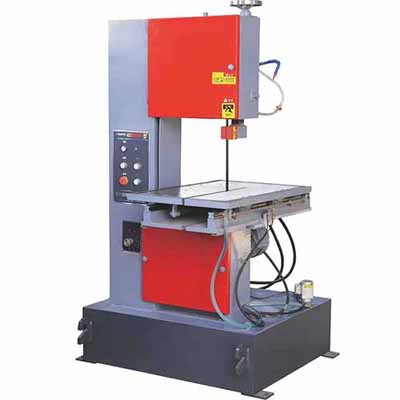HS7140 Hydraulic Hack Saw
Cutting Capacity :
Selecting between a horizontal or vertical band saw depends on your specific needs. Here’s a systematic decision-making guide:
| Application Scenario | Recommended Type | Reason |
|---|---|---|
| Batch cutting of metal bars/tubes | Horizontal Band Saw | Automatic feeding systems enable efficient continuous cutting |
| Complex contour cutting | Vertical Band Saw | Flexible maneuvering for curves and irregular shapes |
| Limited workshop space | Vertical Band Saw | Compact footprint (some models are benchtop) |
| Cutting ultra-thick materials | Heavy-duty Horizontal Band Saw | Hydraulic clamping stabilizes cuts on solid steel >300mm |
| Multi-angle cutting needs | Tilting-head Vertical Band Saw | Adjustable 0-45° cutting head for bevels |


| Material Characteristics | Preferred Saw Type | Technical Notes |
|---|---|---|
| Metal bars >150mm diameter | Horizontal Band Saw | Dual-column structure ensures cutting stability |
| 1-6mm metal sheets | Vertical Band Saw | Fine-tooth blades (10-14 TPI) prevent material deformation |
| Composites/plastics | Vertical Band Saw | Can be equipped with Teflon-coated guides to prevent sticking |
| Ultra-hard alloys (e.g., titanium) | CNC Horizontal Band Saw | Requires high-pressure coolant and carbide-tipped blades |
| Metric | Horizontal Band Saw Advantage | Vertical Band Saw Advantage |
|---|---|---|
| Cutting speed | Auto-feed up to 60 cuts/hour | Manual operation ~15-20 cuts/hour |
| Precision control | ±0.2mm (with servo drive systems) | ±0.5mm (operator skill-dependent) |
| Setup change time | 5-15 mins (fixture adjustment needed) | Instant switch (blade change only) |
| Labor requirements | Can run unattended | Requires dedicated operator |
▶ Initial Investment
▶ Operating Costs
| Item | Horizontal Band Saw | Vertical Band Saw |
|---|---|---|
| Blade consumption | 0.04−0.07/cut (auto-lubrication) | 0.11−0.17/cut (manual lube) |
| Power consumption | 7.5-15kW | 2.2-5.5kW |
| Maintenance cycle | Major service every 2000 hours | Lubrication every 500 hours |
Challenge: Need both batch cutting and complex machining?
Challenge: Cutting ultra-thin, easily deformed materials?
Golden Rule: First identify your routine (80%) cutting needs, then consider special (20%) requirements. Most mature factories maintain both types to balance productivity and flexibility.
Cutting Capacity :
Cutting Capacity :